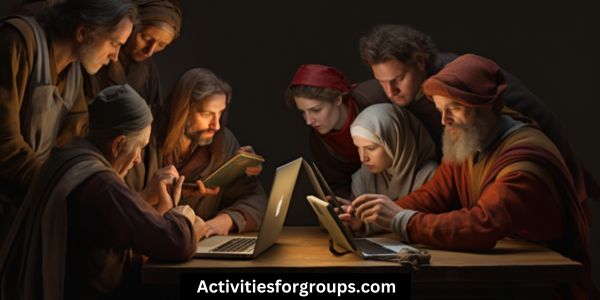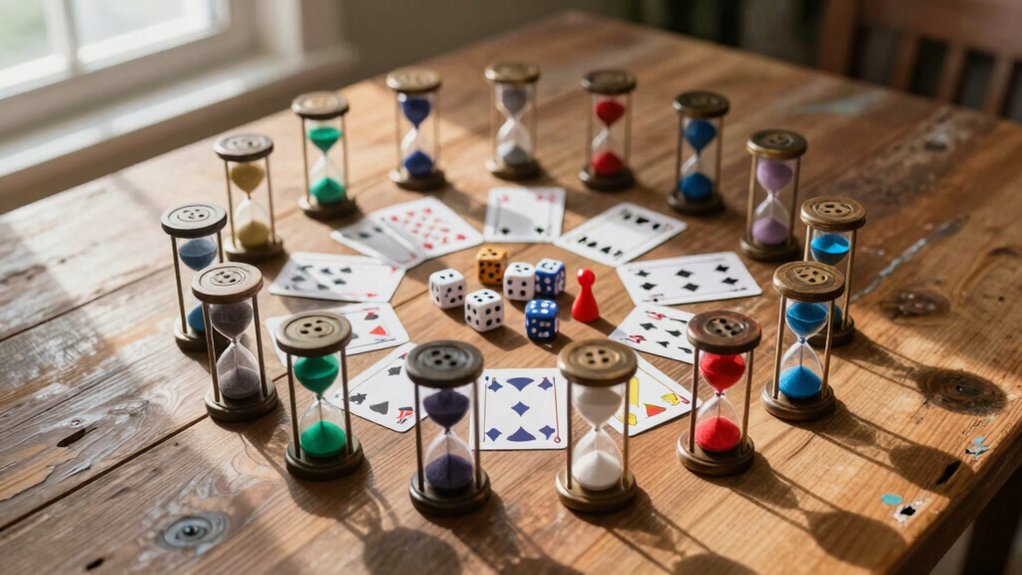Are you looking for a way to foster collaboration and creativity in the workplace? Group art projects could be the answer!
Discover the types of projects, steps to take, and challenges and solutions to get started.

Utilizing group art projects in the workplace can help to break down barriers and increase engagement.
Let’s explore how group art projects can be used to enhance collaboration and creativity in your workplace!
Benefits of Group Art
You can reap numerous benefits by participating in group art projects at work. Not only do art projects provide an outlet for team building, but they can also encourage creative thinking and problem solving.
Working together on a project can help strengthen relationships between co-workers and build trust. It also allows employees to brainstorm ideas and come up with creative solutions to different tasks. Art projects can help employees learn and grow, as well as boost morale and increase motivation.
Group art projects can also foster collaboration and communication, as employees work together to create something unique. They can help cultivate a sense of ownership in the work being done, and create an environment of cooperation and mutual respect.
Working together on art projects also allows employees to contribute their own ideas and perspectives, which can lead to innovative solutions.
Additionally, group art projects can help reduce stress and improve morale. Working on art projects can provide a much-needed break from the everyday grind, and can help employees relax and have fun. It can also provide a sense of accomplishment, as employees work together to create something meaningful.
Types of Projects
There are many types of group art projects that can be used to promote collaboration and creativity in the workplace.
Group painting is one way to allow for artistic expression and creative freedom, as each team member can contribute to the overall design.
Another option is a mural project, where teams can come together to create a larger piece of artwork.
Sculpture projects are another great way to encourage collaboration, as teams can use different materials to build something unique.
Team building activities such as pottery classes can also be beneficial, as they allow members to work together to create something special.
Finally, group photography can be an effective way of boosting team morale, as teams can work together to capture a beautiful moment.
No matter which project you choose, the main goal is to create an environment that encourages collaboration and creativity.
Steps to Take

To get started, create a plan for your group art project that outlines the goals, materials, and timeline. From there, the steps to take to enhance collaboration and creativity in the workplace include:
- Brainstorming ideas as a team to come up with a unique concept
- Gathering materials that everyone can use to bring the idea to life
- Building team unity by assigning specific roles for each team member
- Encouraging open communication and collaboration to ensure a successful outcome
Brainstorming is an important and creative first step, as it allows everyone to make their ideas heard and create a shared vision. It also helps to foster collaboration and create a sense of team unity.
Gathering materials is the next step, as this is what’ll bring the idea to life. Assigning specific roles to each team member and encouraging open communication can also help to ensure a successful outcome.
Lastly, it’s important to remember that art projects in the workplace should be fun and engaging for everyone. Setting clear expectations and allowing everyone to contribute to the project will help create an environment of collaboration and creativity.
With the right steps, group art projects can be a great way to foster collaboration and creativity in the workplace.
Challenges & Solutions
Identifying potential challenges and finding solutions can be key to creating successful group art projects in the workplace. Engaging teams in the process can be difficult, especially if there are different personalities in the group.
To avoid potential issues, it’s important to create an atmosphere of respect. This can be done by setting ground rules and encouraging everyone to contribute.
Brainstorming ideas can be a great way to get the creative juices flowing. By allowing each team member to give their input, you can create a safe space for new ideas to be explored.
It’s also important to avoid overcomplicating the project, as this can lead to confusion and frustration. Keeping the project simple and focused can help ensure that all team members know what they need to do.
Additionally, the project should be broken down into smaller, more manageable tasks to make it easier for teams to complete.
Getting Started

Once you’ve identified a project and set ground rules, you’re ready to get started on your group art project. Here are some key steps to ensure success:
- Brainstorm ideas: Encourage everyone to share their ideas and help each other bring them to life.
- Divide up tasks: Assign roles and tasks to each member to ensure there’s a clear line of responsibility for each aspect of the project.
- Facilitate idea sharing: Make sure everyone is getting their ideas heard and respected. Encourage collaboration and open dialogue.
- Prioritize tasks: Set realistic deadlines and keep everyone on track to ensure the project is completed on time.
Frequently Asked Questions
How Much Time Should Be Allocated for Group Art Projects?
You should allocate enough time for group art projects to promote encouraging participation and effective time management.
Are Group Art Projects Suitable for All Types of Workplaces?
Yes, group art projects may be suitable for all types of workplaces, depending on the team dynamics and the desired outcome. Creative freedom should be encouraged to ensure successful results.
What Kind of Materials Are Required for Group Art Projects?
Group art projects require materials such as paper, pens, paints, clay, and other art supplies for team building and problem solving.
What Are the Best Methods for Evaluating the Success of Group Art Projects?
Evaluate success by assessing how well the group worked together, how innovative ideas were generated, and how team dynamics impacted the project.
Are There Any Safety Considerations to Consider When Planning Group Art Projects?
When planning group art projects, it’s important to consider participant selection and space planning for safety. Think about who should be involved and where the activity should take place.
Conclusion
Group art projects can be a great way to boost collaboration and creativity in the workplace.
With the right project types, steps, and solutions to potential challenges, you can get started on group art projects that will have a positive impact on your team.
Give it a try and see how it can help your team work together more effectively and foster creative thinking.




Leave a Reply